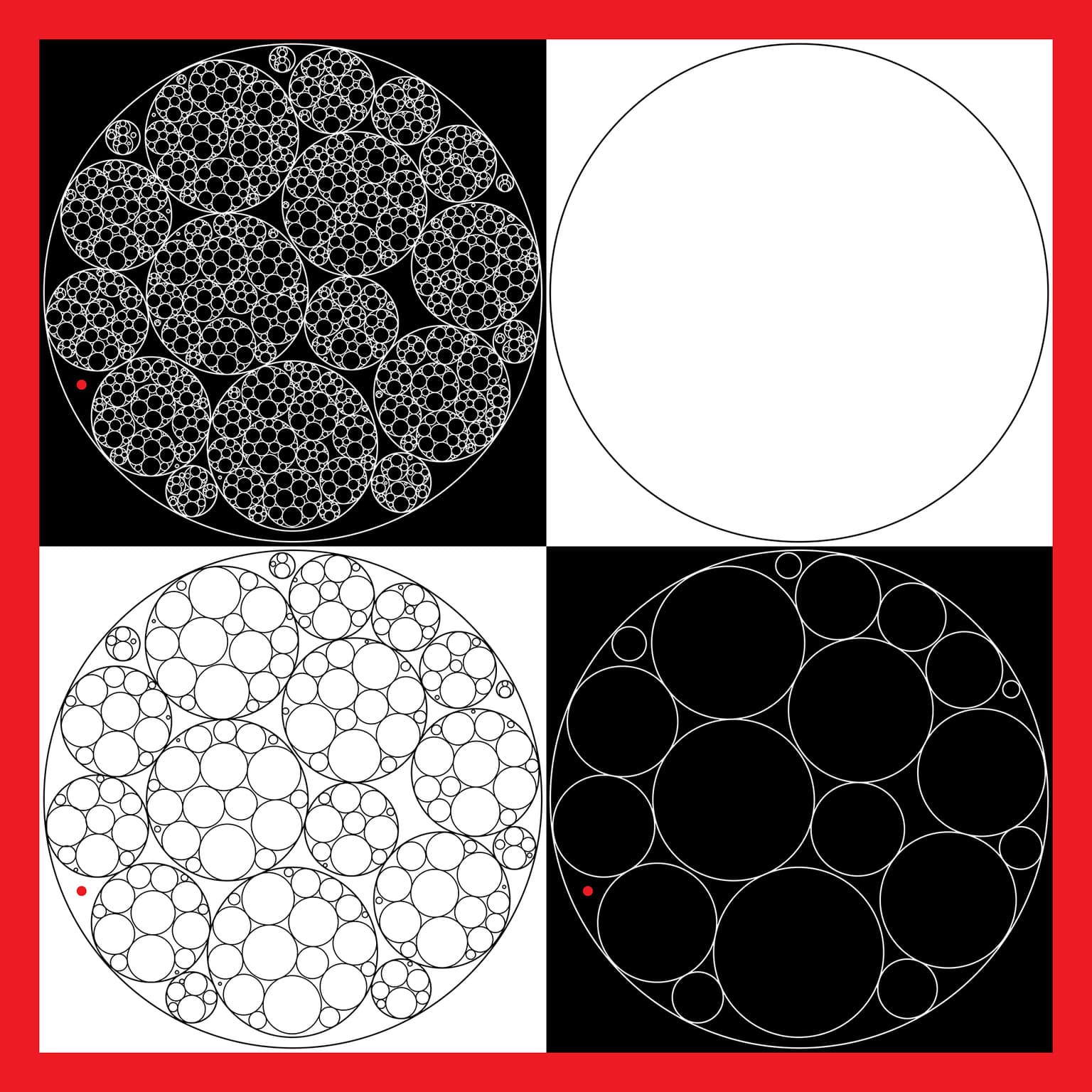2021 Joint Mathematics Meetings
Margaret Kepner
Artists
Margaret Kepner
Independent Artist
Washington, District of Columbia, USA
Statement
I enjoy exploring the possibilities for conveying ideas in new ways, primarily visually. My goal is to express mathematical concepts through attributes such as color, geometric forms, and patterns. Recently, I have been exploring the topic of additive partitions, looking at alternative methods for diagramming partitions, and then exploring the ways in which these diagrams can be map-colored. In addition, I have extended my previous circle-packing studies to the next level, packing circles within circles recursively.
Artworks

20/20/20 Hindsight
50 x 50 cm
Archival Inkjet Print
2020
This work is based on successive applications of circle packing. The process begins in the upper-right quadrant with a single circle. In the quadrant below, a packing of 20 circles into the first circle is shown. The 20 circles are proportional in size such that if the diameter of the smallest circle is 1, the next circle has a diameter of 2, and so on. Next, in the lower-left quadrant, each of the 20 circles is packed with the number of circles corresponding to its relative size. Thus, the size-3 circle at the top is packed with 3 circles, etc. The packing process is applied once more in the upper-left quadrant, producing a lacy image composed of 1750 circles. The original 1-circle remains invariant throughout and is highlighted in red.

Eight-Ring Circus
50 x 50 cm
Archival Inkjet Print
2020
A partition of N is a set of positive integers that adds up to N. This work is an exploration of the 22 unique partitions of eight, and their representations and properties. For example, the diagram located in row 4, column 2 of the left-hand block depicts the partition 3 + 3 + 1+ 1. The number of sectors corresponds to the number of terms (4), and in each sector the number of rings represents the values of the terms 3, 3, 1, and 1. This diagram can be 3-colored. In the right-hand block, the roles of sectors and rings are reversed. Thus, the diagram for the same partition (displayed in the corresponding position) is shown using 4 rings that have subdivisions of 3, 3, 1, and 1 (working inward). In this format, the diagram must be 4-colored.